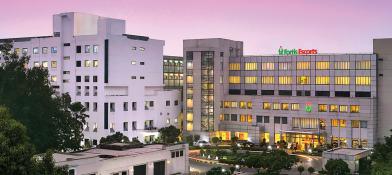LVAD Heart Surgery
Heart Failure doesn’t mean heart fail; in fact, it is condition in which heart cannot pump enough blood to meet body’s need. It is a condition which develops over time. The Advanced Heart Failure program is backed by a comprehensive team of 40 doctors, who have a cumulative surgical and clinical expertise of more than 30 years. The Advanced Heart Failure program is equipped with newest technology and backed by adept clinical and surgical expertise for handling any critical procedures. We undertake various acute lifesaving procedures at our hospital mainly Heart Transplant, VAD & ECMO.
Heart Failure
An advanced procedure for patients with end-stage heart failure, where in the condition of heart is extremely weak or damaged. In a Heart Transplant deceased, failing heart is replaced with the heart of donor who is having a healthier heart.
Ventricular Assist Device (VAD)
A ventricular assist device (VAD) is a mechanical pump, implanted in the heart to pump blood from the lower chambers of your heart (the ventricles) to the rest of your body. When this VAD is placed in the left ventricle then it is called Left Ventricle Assisted Device (LVAD) and when it is placed in the right side then it is called Right Ventricle Assisted Device (RVAD). At Fortis Escorts Heart Institute we have been performing this procedure since 2015. This procedure is done when one is suffering from heart failure but is not qualified for heart transplant.
How does the LVAD work?
The doctor will recommend the one that is best for you based on your needs and medical condition.
The LVAD is implanted during open heart surgery. The pump unit is placed in the chest. It is implanted by the surgeon into the apex of the heart where it receives blood. A tube then delivers this blood from the device to the aorta (the large artery that takes blood from the heart to the rest of the body. It works by pumping blood by continuous flow from the left ventricle to the aorta.
The pump is attached to a driveline (cable) and control system (controller). The driveline passes from the device through the skin on your belly (abdomen) to the controller (a small computer) on the outside of your body. The controller runs the pump and provides messages and alarms to help you operate the system.
A power supply (rechargeable batteries or cord that plugs into an electrical socket) keeps the LVAD running.
Quality and Outcomes
Doctors vary in quality due to differences in training, skill and experience; hospitals differ in the number of services available. The more complex your medical problem, the greater these differences in quality become and the more they matter.
Benefits of LVAD
- Greater Life expectancy
- Better quality of life









